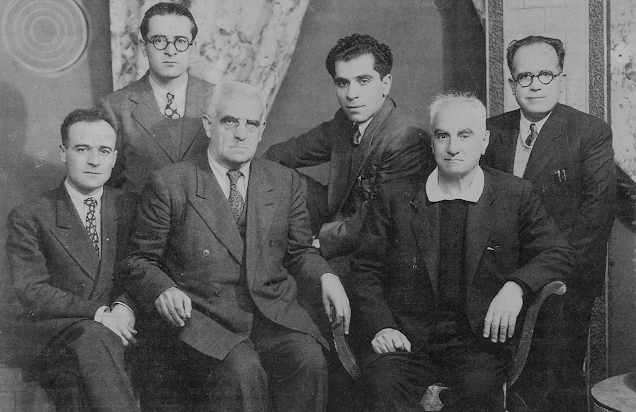Krikor Kradjian
As an aftermath of the August 4, 2020 catastrophic explosion in Lebanon, Krikor Kradjian shared this heart wrenching testament with friends in an email about a young vibrant little girl named Kami. He approved my translation for posting. Kami (քամի) means breeze. The original is reproduced below. Vahe H Apelian.
Her name is Kami.
Every morning her young mother, carrying Karmi, passed in front of my pharmacy. She saluted me with a smile while hurrying to her parents to leave her child under their care so that she would be able to go to work.
Kami was six months old when I met her first. In vain, I tried to approach her attempting to have the tip of my index finger touch hers or offer her something that would catch her attention. Kami would cling to her mother, who gave her all the security she craved.
Kami started growing up. After mustering her initial attempts to walk on her own, she no longer wanted to be held by her mother. The world had become hers to conquer. She wanted to walk. She was a big girl now. At the beginning she let her mother hold her hand but months later she no longer let her mother hold her hand any more. She wanted to walk on the sidewalk by herself. She lived up to her name Breeze and more. She was growing into a veritable tempestuous girl. I am sure in no time she would start stirring the hearts of the boys.
I started waving to her or sending her air born kisses as they passed by and she continued accompanying her mother who seemed to be content seeing her daughter growing up friendly and reciprocating the attention she received.
Two days ago, Kami and her mother crossed the street from their side of the sidewalk into the pharmacy and inquired about what has become a common place conversation post Beirut explosion.
- “Hope you fared well. I hope no harm came to you.” She said.
- “We are just fine. The damage was financial.”
- “Just like with us.” She said.
But Kami was no longer the tempestuous girl she was. She no longer wanted to walk on her own without holding her mother’s hand. She held tightly on to her mother. Offering her a gift, or something sweet to taste or attempting to approach her did not distract her away from her mother she held tightly.
All Kami wanted is the security she misses.
*****
Անունը Քամի է։
Ամէն առաւօտ, երիտասարդ մայրը փոքրիկ Քամին գրկած, դեղարանին առջեւէն կ՚անցնէր, քաղաքավար եւանուշ կը բարեւէր եւ աճապարանքով կը շարունակէր ճամբան. պէտք էր պզտիկը հասցնէր ծնողքին եւ ինքշտապէր գործի։
Քամին մօտաւորապէս վեց ամսու էր երբ ճանչցայ զինք։ Որքան ալ որ փորձեցի մտերմանալ, ցուցամատսիր ցուցամատին դպցնել, շաքարով մը սիրաշահիլ, անօգուտ. Քամին մօրը փաթթուած( ոչ, կը կարծեմ մայրըամուր սեղմած փոքրիկը), չէր ուզէր ընդունիլ ո՚չ անուշ խօսք, ո՚չ համով բան։ Մայրը իրեն կու տար իր ամէնէնշատ պահանջածը՝ ապահովութիւն։
Քամին սկսած էր մեծնալ։ Քալելու առաջին յաջող փորձերէն ետք, այլեւս չէր ուզեր մօրը գիրկը մնալ։Աշխարհը իրեն էր, կ՚ուզէր քալել եւ ցոյց տալ բոլորին, որ ինք մե՛ծ աղջիկ է։ Սկիզբները, մօրը ձեռքը ամուր մըբռնած իսկ ամիսներ ետք արդէն ինքնավստահ, կ՚ուզէր մայթին վրայ առանձինը, առանց ձեռք բռնելու քալել։Իսկական փոթորիկ մը, որ վստահ եմ պիտի ալեկոծէր տղոց սրտերը շուտով։
Հեռուէն-հեռու թաթիկով բարեւ մը կամ օդէն ղրկուած համբոյր մը «օրս օր կ՚ընէր», ընկերացածերիտասարդ մօր գոհունակ ժպիտին, ի տես փոքրիկին մարդամօտ վարուելակերպին։
Երկու օր առաջ, Քամին եւ մայրը դիմացի մայթէն եկան այս կողմ, Պէյրութի պայթումէն ետք մարդոց միջեւկրկնուող խօսքերը փոխանակելու՝
- Անցա՛ծ ըլլայ, յուսամ բան մը չեղաւ ձեզի։
- Ապակիի եւ նիւթական վնաս։ Լաւ ենք
- Մեզի ալ. մենք ալ։
Քամին հիմա երկու տարեկան է։ Ան այլեւս չուզեր առանձինը, առանց մօր ձեռքը բռնելու քալել։ Մօրըգիրկը, ամուր մը փաթթուած կը մնայ եւ ոչ մէկ բան՝ նուէր, մատիկներու հպում, անուշեղէն կը շեղեն իրուշադրութիւնը։
Քամին միայն ու միայն կը պահանջէ
ապահովութի՛ւն։











